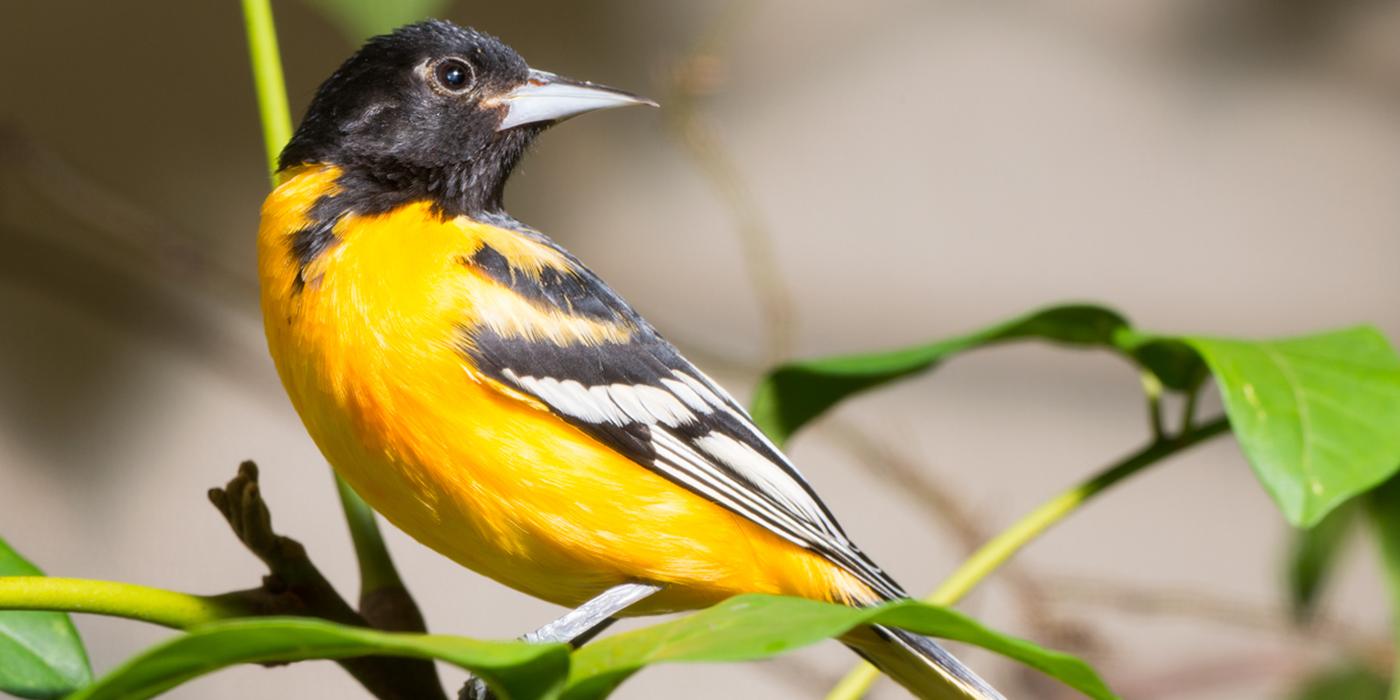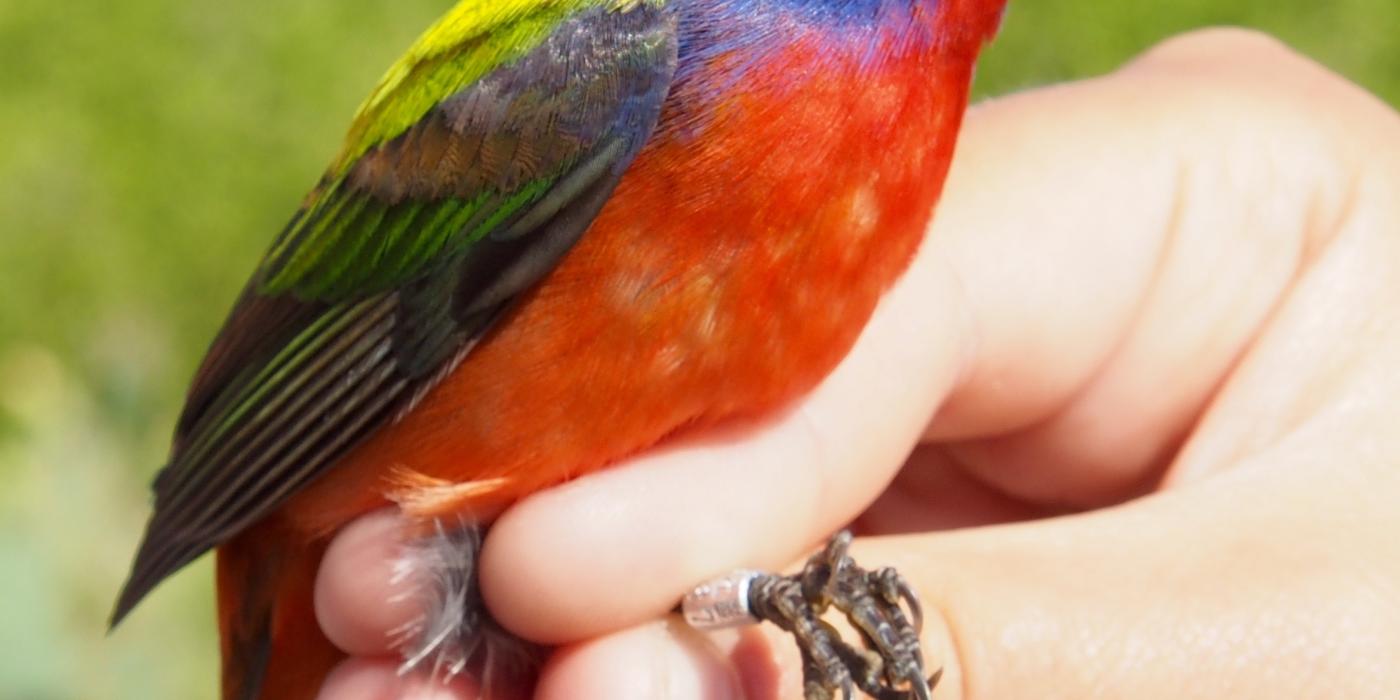Solving the Perilous Puzzle of Bird Migration
Neither wind, nor rain, nor dark of night can stop a songbird’s migration. Crossing the Gulf of Mexico alone, a popular stopover site, can take a 24 hour non-stop flight. Smithsonian Migratory Bird Center Scientist Emily Cohen is studying how they survive against tremendous odds.
Why is songbird migration such a mystery?
Seeing the ‘big picture’ of songbirds' full annual migration cycle will help us better understand migratory bird biology. It also feels very urgent, because many of the migratory birds that breed on the East Coast and elsewhere are declining. Right now, they are common, but we don’t know how long they’ll remain common if we can’t solve these mysteries.
When we see songbirds like the wood thrush or Baltimore oriole in the summer, we get just a tiny glimpse of their annual cycle. We see them pair, build nests, raise young and find food. But, these things are just one small piece of the larger puzzle.
Our focus is trying to understand where migratory songbirds go. For example, where do the birds that breed in Rock Creek Park in Washington, D.C. go during fall migration? Where do they spend the winter? What route do they take when they return in spring? We know the ranges of species, but we don’t know how populations are connected. Do birds spread out when they migrate, or do they funnel through certain areas? What influences a bird’s migration path?
Why study birds in the Gulf of Mexico?
Many of the birds that we see breeding and raising young in our own backyards this time of year have just made a phenomenal journey to get here. The Gulf of Mexico region is an annual stopover spot for these birds, whether they’re flying up north to breed in the spring or heading south in the fall.
To fly across the Gulf of Mexico—from Florida to Texas, Mexico, the Yucatan Peninsula and Cuba—is no simple feat. Depending upon the winds they encounter, birds could face a 15-24 hour non-stop flight.
For an animal that weighs as much as a quarter, you can imagine that a migration like that would require lots of fuel in the form of food. When the birds first touch down from their non-stop flight, they are very skinny. To recover from this trip and prepare for the next, they have to refuel in habitats around the Gulf. Birds can put on up to 50 percent of their bodyweight as fat. These habitats along the coastline are where the birds undergo this amazing physiological change. Without these habitats, birds wouldn’t be able to refuel or make their trip as successfully.
What’s happening to their habitat along the Gulf Coast?
The coastlines are really important stopover habitats for migrating birds, but they’re also where human populations tend to cluster. Many of the recent changes to coastlines are driven by human population growth and urban development. Climate change, too, is causing storms to increase in size and frequency. When hurricanes knock out big swaths of forests, it takes many years for those forests to regenerate. In some cases, those forests may not grow back at all.
What excites you most about this research?
I’m always amazed that migratory birds make these trips that are hundreds of kilometers every single year. They make it seem so easy! But, using the analytical and technical tools at our fingertips—from tracking devices and citizen science data to weather radar and genetic analysis—we are starting to really learn, for the first time, how birds overcome the many obstacles they face during these difficult journeys. Understanding how migratory songbirds accomplish this every year is really exciting. And it is critical that we gather this wealth of information to see the big picture: are changes along the Gulf Coast, and other coastlines, increasing the cost of being a migratory bird?
This article is featured in the June 2017 issue of National Zoo News. The study, which was published May 3 in The Condor: Ornithological Applications, focuses specifically on coastal habitats around the Gulf of Mexico, which provide vital resources for North America’s migratory birds during migration to wintering areas in the tropics. By 2020, the Smithsonian National Zoo’s historic 1928 Bird House will transform into Experience Migration, a first-of-its-kind attraction that immerses visitors in the annual journeys of western hemisphere birds.

